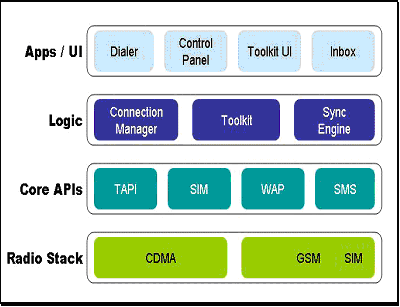Slide 2.19: Windows Mobile-based Smartphones (cont.)
Slide 2.21: Windows Mobile-based Smartphone programming
Home

|
Slide 2.19: Windows Mobile-based Smartphones (cont.) Slide 2.21: Windows Mobile-based Smartphone programming Home |

|

|
Functions include voice, SMS, and Instant Messaging services; email that can be received from sources such as the Outlook messaging and collaboration client, Exchange, IMAP, and POP3 services; and Personal Information Management (PIM) applications such as calendar and contacts. |